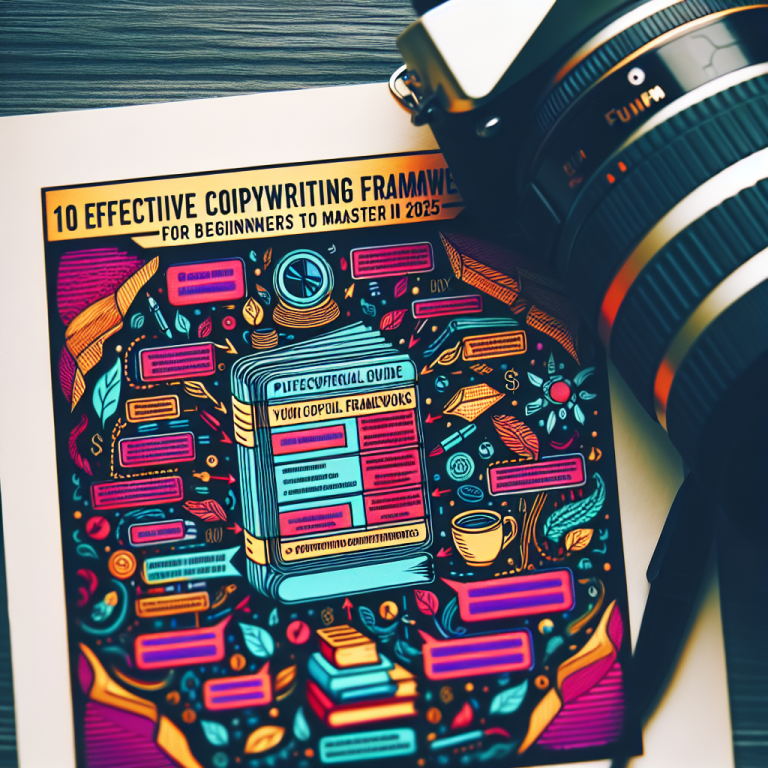The Ultimate Guide to Writing That Builds Trust in 2025: 7 Powerful Strategies
- 1. Know Your Audience Deeply
- 2. Be Authentic and Transparent
- 3. Use Clear and Concise Language
- 4. Provide Credible Evidence
- 5. Build Relatable Stories
- 6. Maintain a Consistent Voice
- 7. Engage and Respond to Your Audience
1. Know Your Audience Deeply
Understanding Your Audience’s Needs and Preferences
One of the foundational elements of writing that builds trust in 2025 is truly knowing your audience. When you understand their needs, preferences, pain points, and aspirations, you can tailor your messages to resonate more effectively. Conduct surveys, analyze feedback, and study your audience demographics regularly to stay updated on their evolving interests.
This depth of insight allows you to craft content that speaks directly to your audience, making them feel seen and valued. For example, a health blog targeting young adults can include personalized tips on fitness routines specific to their lifestyle, thus establishing credibility and trust.
Research shows that audiences are more likely to trust content that aligns with their personal experiences. Use tools like Google Analytics and social media insights to gather data that helps you create targeted, relevant content. Remember, writing that builds trust hinges on this deep understanding.
Creating Audience Personas for Better Engagement
Developing detailed audience personas helps you clarify who you are speaking to. A persona includes demographic info, interests, challenges, and motivations. With these profiles, your writing becomes more intentional and focused, fostering trust through relevance.
For instance, if your target audience is small business owners, your content should address their specific challenges, such as cash flow or marketing strategies. When readers see that your content addresses their particular concerns, they perceive you as both knowledgeable and trustworthy.
Regularly update these personas based on feedback and analytics to keep your content aligned with your audience’s current state. Writing that builds trust is ultimately rooted in relevance and authenticity.
2. Be Authentic and Transparent
The Power of Genuine Communication
Authenticity is a cornerstone of writing that builds trust. In 2025, audiences are savvy and can quickly spot insincerity. When you communicate genuinely, sharing both successes and setbacks, you foster a deeper connection with your readers.
For example, sharing real stories behind your brandâs journey not only humanizes your business but also demonstrates integrity. Transparency about your processes or limitations reassures your audience that you’re honest and trustworthy.
Research indicates that transparency significantly boosts customer loyalty. According to a 2025 survey, 78% of consumers prefer brands that openly admit mistakes and rectify them transparentlyâbuilding long-term trust.
Practice Ethical and Honest Writing
Always avoid misleading claims or over-promising. Instead, set realistic expectations and deliver on them. This honesty builds a foundation of trust that encourages repeat engagement.
In content, be clear about what your product or service can truly deliver. When you keep your promises, it shows integrity, an essential element of writing that builds trust.
Consider adding case studies or testimonials that genuinely reflect your offerings rather than fabricated storiesâauthenticity matters now more than ever in 2025.
3. Use Clear and Concise Language
Simplicity is Key for Trustworthy Writing
In 2025, clarity in your writing is critical to establishing trust. Avoid jargon and overly complex language that can alienate or confuse your audience. Use simple, straightforward words to communicate your ideas effectively.
For example, technical products or services should be explained in a way that a layperson can understand. This transparency shows that you respect your audienceâs intelligence and want them to make informed decisions.
Research from 2024 shows that audiences spend only about 15 seconds on average reading online content. Clear, concise writing ensures your message is received and understood quickly, building trust through respect for their time.
Formatting for Readability
Break long paragraphs into smaller sections, use bullet points for key information, and include headings and subheadings. Visual clarity enhances trust because it demonstrates professionalism and attention to detail.
Adding summaries or key takeaways at the end of your content helps reinforce your message, ensuring your audience leaves with a positive impression of your credibility.
4. Provide Credible Evidence
Leveraging Data and Research
To foster trust, back up your claims with credible evidence. Use reputable data, industry reports, case studies, and customer testimonials to support your messages. When readers see evidence that your assertions are based on facts, they are more likely to trust you.
For instance, including statistics from reputable sources like the Pew Research Center or industry-specific surveys can substantiate your claims. This approach demonstrates that your content is well-researched and reliable.
In 2025, AI-driven tools make it easier than ever to analyze and incorporate relevant data into your content, elevating your authority and trustworthiness.
Authentic Testimonials and Case Studies
Sharing real customer stories adds a layer of authenticity to your content. Potential customers tend to trust peer experiences more than self-promotional messages. Encourage honest reviews and showcase successful case studies to build credibility.
For example, a software company could publish detailed case studies showing how their product solved specific problems, complete with data points and direct quotes from clients.
Always verify the authenticity of testimonials to maintain integrity. Genuine evidence goes a long way in establishing trust in 2025.
5. Build Relatable Stories
The Impact of Storytelling on Trust
Storytelling is a powerful tool to connect emotionally with your audience. Sharing relatable stories makes your brand more human and trustworthy. These stories can be about customer successes, company challenges, or personal experiences.
In 2025, storytelling techniques have evolved with multimedia, making stories more engaging through videos, infographics, and interactive content.
For example, sharing a story about how your team overcame a significant obstacle to deliver exceptional service can inspire trust and loyalty from your audience.
Creating Content that Resonates
The key is authenticityâyour stories should be honest and relevant. When your audience sees themselves in your stories, theyâre more likely to trust your brand.
Use storytelling in blogs, social media, and video content. This emotional connection can convert audiences into loyal customers who trust your brand for the long term.
Research shows that emotionally engaged consumers are 60% more likely to trust a brand. Use this insight to craft compelling narratives in 2025.
6. Maintain a Consistent Voice
Building Recognition and Trust through Brand Voice
Consistency in your tone, style, and messaging builds familiarity, which in turn fosters trust. A recognizable voice makes your content feel reliable and professional across all channels.
This consistency extends to visual branding as well as writing style, whether friendly, authoritative, or casualâwhatever suits your audience best. Maintaining this voice helps reinforce your brand identity in 2025.
For example, a tech startup might adopt a friendly yet expert tone, making complex information approachable while establishing authority. This approach cultivates trust over time.
Strategies for Consistent Communication
Create brand guidelines that detail tone, style, and messaging principles. Regularly train your team to adhere to these standards, ensuring every piece of content aligns.
Audit your content periodically to spot inconsistencies and correct them. Consistent voice and messaging reinforce your reputation as a trustworthy source in your industry.
This consistency reassures your audience and supports their trust in your expertise and integrity. Writing that builds trust is sustainable when it is consistent.
7. Engage and Respond to Your Audience
Active Listening and Responsive Communication
Trust grows when you actively engage with your community. Responding to comments, questions, and feedback shows you value their input, making your audience feel heard and appreciated.
In 2025, social media and community platforms provide real-time interaction opportunities. Use these channels to demonstrate your commitment to transparency and care.
For example, promptly addressing customer complaints or clarifying misunderstandings can turn a negative experience into a trust-building opportunity.
Personalized Interactions
Tailor your responses to individual concerns whenever possible. Personalization makes interactions more meaningful and trustworthy. Use data insights to understand preferences and customize your communication accordingly.
This approach fosters loyalty and enhances your reputation as an authentic and caring brand. Writing that builds trust isnât just about delivering informationâit’s about building relationships.
Frequently Asked Questions
What is writing that builds trust?
Writing that builds trust refers to content crafted to establish credibility, authenticity, and a genuine connection with your audience. It involves honest communication, providing credible evidence, and engaging storytelling.
Why is trust important in content writing in 2025?
In 2025, consumer skepticism remains high. Trust is crucial because it influences purchasing decisions, brand loyalty, and reputation. Authentic, transparent writing helps you stand out and foster long-term relationships.
How can I improve my writing to build trust?
Focus on understanding your audience, be transparent, use clear language, support claims with evidence, and engage actively with your followers. Consistency and authenticity are key foundations.
Can storytelling really help in building trust?
Absolutely! Relatable and genuine stories humanize your brand, forging emotional connections that are powerful trust builders. Using multimedia storytelling techniques in 2025 amplifies this effect.
Are there any tools to help create writing that builds trust?
Yes, tools like Grammarly, SEMrush, and customer feedback platforms can help improve clarity, optimize credibility, and monitor audience perception for more trustworthy content.
Conclusion
Writing that builds trust remains a vital component of successful communication in 2025. By understanding your audience, being authentic, providing credible evidence, and engaging genuinely, you create content that resonates and sustains trust. Remember, trust is the foundation of long-term relationships, whether in business, marketing, or interpersonal connections. Keep honing these strategies, and your writing in 2025 will continue to foster meaningful, trustworthy relationships with your audience.









